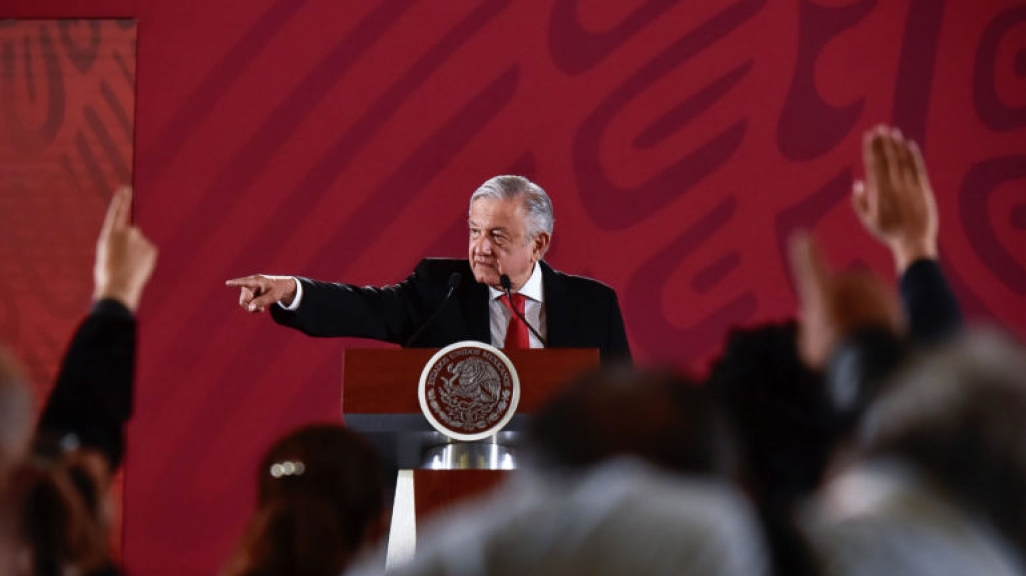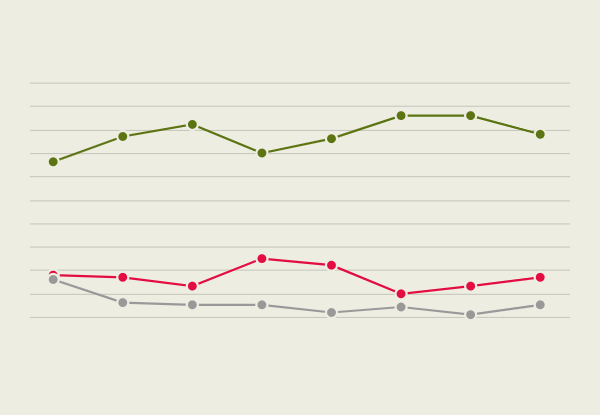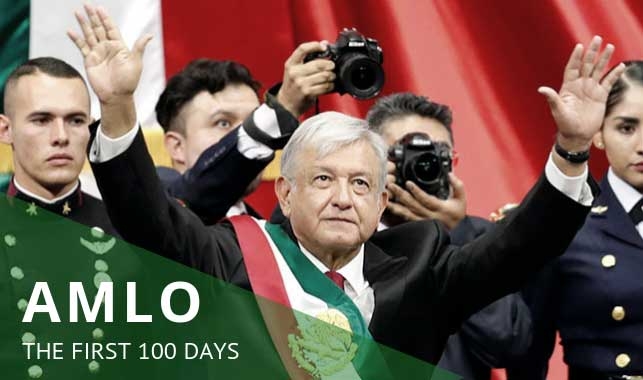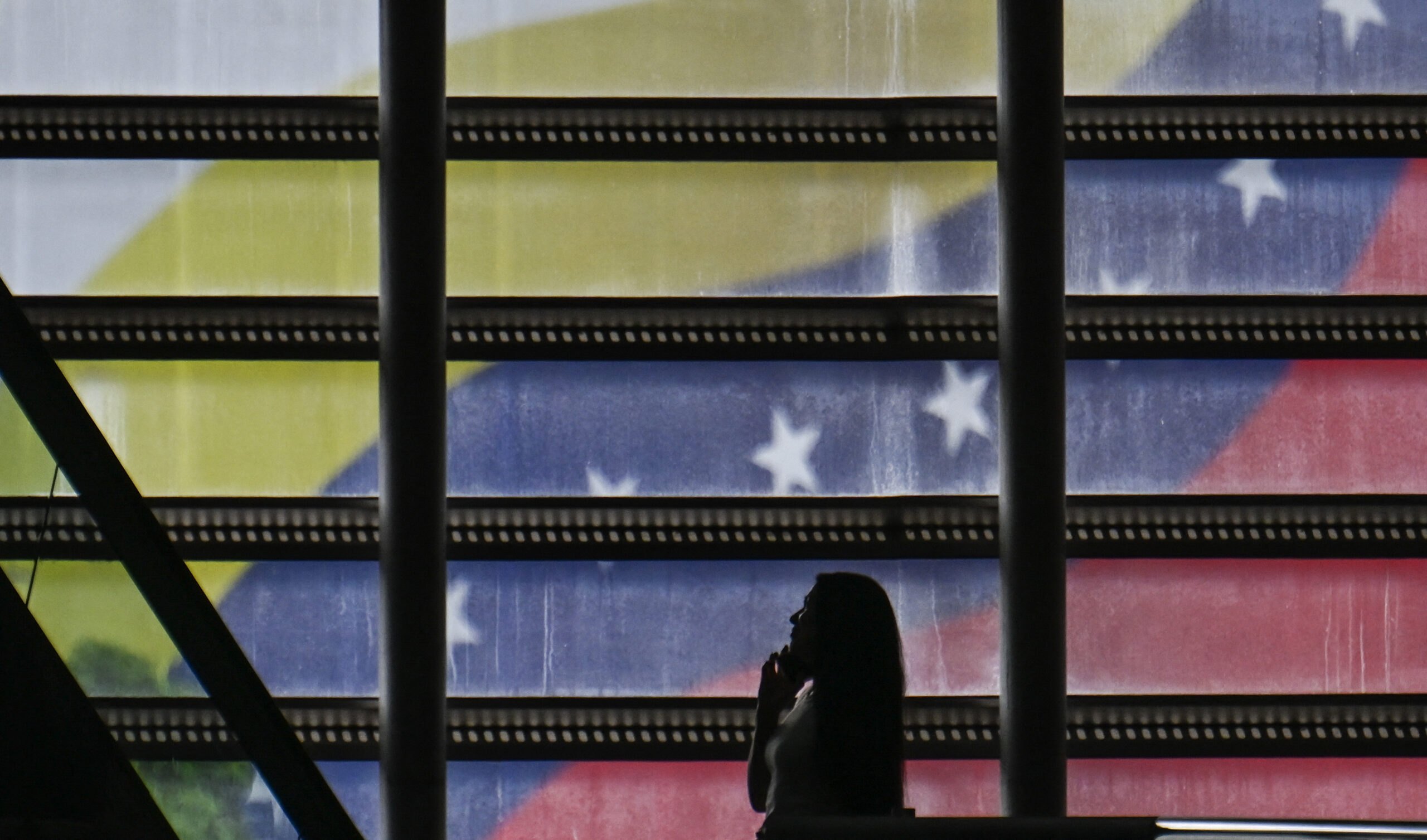Viewpoint: Three Areas Shaping AMLO's Presidency a Year after His Win
Viewpoint: Three Areas Shaping AMLO's Presidency a Year after His Win
AS/COA’s Carin Zissis takes at a look at which issues marked the presidency of Mexico’s Andrés Manuel López Obrador in the year since his landslide victory.
It’s been a year since Andrés Manuel López Obrador won an electoral victory so decisive that it was likened to a tsunami. Changes started before he took office, from the cancelation of a massive infrastructure project—an international airport outside the capital—to promises of others, such as a train slated to carve through the Yucatán and an oil refinery in his home state. At his December 1 inauguration, he pledged to end Mexico’s neoliberal era. Rating agencies have since warned about the financial management of indebted state oil firm Pemex, civil society groups saw budgets slashed as the government cut them out of services, and López Obrador—or AMLO—made himself an image of austerity by boarding commercial flights and using a white Jetta over a heavily guarded black SUV.
There’s all that and plenty more to cover but for an idea of what’s taken place in the first seven months of AMLO’s government, here is a look at three relationships marking his presidency.
1. His relationship with the press
AMLO’s predecessor, Enrique Peña Nieto, barely gave press conferences. AMLO instead sets the agenda by broadcasting one each morning from the National Palace. For those wondering how long he can keep it up, he held them daily as Mexico City’s mayor. Most Mexicans approve of the mañaneras, which are carried on platforms like YouTube and Spotify, and AMLO says they show he differs from what came before as he makes himself accountable to the public. Critics counter that he uses the daily pressers for his own benefit. At one in March, a fawning reporter asked about his health routine and compared him to a Kenyan runner.
Despite some flattery, AMLO has a difficult relationship with the media. He lost two presidential bids before winning and, over the years, found himself at odds with an industry he identifies as part of the mafia del poder (mafia of power), given its dependence on government advertising.
Now he’s known for criticizing media he considers conservative and elitist, or prensa fifí. These jabs carry risks in Mexico, which stands as the deadliest country in the Americas for journalists and, at 14, has the world’s highest tally of missing reporters. While the dangers predate his government, impunity continues, with seven journalists murdered this year in Mexico, per the Committee to Protect Journalists. The organization reports that the news outlets and journalists AMLO criticizes face online harassment and even death threats.
2. His relationship with numbers
Yo tengo otros datos. AMLO is known to use this phrase—“I have other data”—when journalists at the mañaneras quiz him about everything from GDP growth deceleration to shrinking job creation. Still, an El Financiero poll found that Mexicans are 1.5 times more likely to believe the president’s figures over those from other institutions. That didn’t stop a recent viral meme for a “new” government agency known as the National Institute of Other Data.
Jokes aside, the president’s use of “I have other data” earned its fame at an April press conference where Univision’s Jorge Ramos challenged AMLO’s assertion that homicide rates had stabilized under his watch. At that point, Mexico’s Public Security Ministry found year-on-year murder rates up by 18 percent during the first three months of AMLO’s term. More recent numbers show a total of 17,500 murders during his first six months as president, with nearly 500 classified as femicides.
Mexicans largely back the popular president on a range of issues, but violence has the potential to be his Achilles’ heel. A Mitofsky poll shows most Mexicans consider their lives improved one year out from AMLO’s electoral victory, but 60 percent see the security situation as worse and just 9 percent consider it improved. In the same poll, they rank murders, kidnappings, and organized crime as the country’s three most serious problems.
While campaigning, López Obrador pledged he would end Mexico’s 12-year-old drug war and send troops back to the barracks. Instead, he inaugurated a 70,000-strong National Guard on June 30. Most Mexicans favor the move, and a constitutional reform defines the National Guard as a civilian institution. But Human Rights Watch argues the body will deepen a militarized policing approach. Security analyst Alejandro Hope writes that three-quarters of the force’s initial members will be soldiers or marines and its commander is an active-duty general.
3. His relationship with the world
For AMLO, all politics is local, or as he likes to say, “The best foreign policy is domestic policy.” Most Mexicans agree, even if they disagree with the international airport’s cancelation. Last month, AMLO, who skipped the G20 and hasn’t left Mexico in nearly two years, tweeted a videoconference he held with Facebook’s Mark Zuckerberg, noting that such technology made travel less necessary. Unlike other Lima Group leaders, he’s shied away from taking a stance on Venezuela’s political standoff, contending that Mexico should revert to its traditional noninterventionist policy.
But even if he prefers to prioritize matters at home, Mexico’s geographic location next to an 800-pound gorilla challenges that instinct now, just as it has over the course of the country’s history. Peña Nieto’s government renegotiated the North American Free Trade Agreement, inking the U.S.-Mexico-Canada Agreement (USMCA) on the eve of AMLO’s inauguration. AMLO then started the USMCA ratification process in Mexico’s Congress at the end of May. Within a day, U.S. President Donald Trump threatened escalating tariffs if Mexico didn’t take action to stem Central American migration. AMLO’s Foreign Minister Marcelo Ebrard led a delegation to Washington to stave off the tariff threat. An ensuing agreement resulted in 6,000 members of the National Guard, created to deal with domestic crime problems, heading to Mexico’s southern border to handle the flow of Central American migrants.
On the campaign trail, AMLO said he would not do Washington’s dirty work on migration. But a rising portion of Mexicans support a harsher immigration policy and most reject AMLO’s proposals to let migrants stay and work in the country. Nearly two-thirds don’t expect Trump to respect the bilateral migration deal.
Mexico is delivering anyway. Deportations rose 33 percent from May to June, hitting nearly 22,000—the highest monthly figure since March 2006. The United States has sent some 16,500 migrants across the border to wait out asylum proceedings under a program dubbed “Remain in Mexico.”
On July 1—as AMLO celebrated the anniversary of his election win in the capital’s main plaza—Trump said he was no longer considering hitting Mexico with tariffs. On the same day, the White House found a new target: threatening the EU with them instead.











